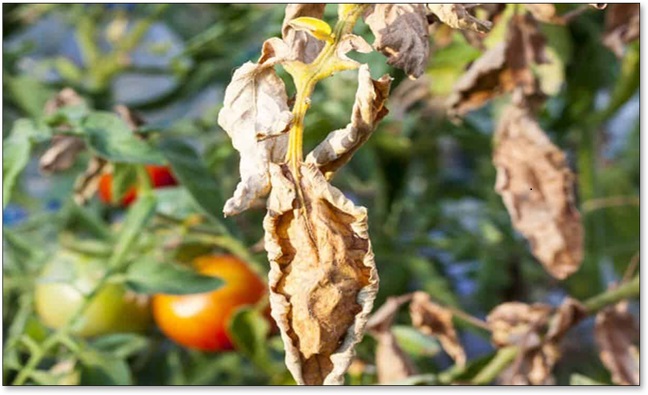PS PhD Exit Seminar - Characterisation of the SIX6 effector protein from Fusarium oxysporum f. sp. lycopersici
Fungal pathogens of crop plants are a major cause for yield loss and a critical concern for global food security.
Speakers
Event series
Content navigation
Description

Abstract: Fungal pathogens of crop plants are a major cause for yield loss and a critical concern for global food security. The soil-borne vascular-wilt fungus Fusarium oxysporum is one of the most notorious fungal pathogens of crop plants because it comprises a species complex that combines the ability to cause severe yield losses with a wide host range affecting diverse crops such as tomato, legumes, melons and bananas (plantains). This project will use the interaction between tomato and F. oxysporum f. sp. lycopersici (Fol) to develop a better understanding of the molecular mechanisms underlying compatible and incompatible interactions between plants and F. oxysporum. This pathosystem was chosen because it is one of the best-characterised plant-F. oxysporum interactions owing to the recent identification of both host and pathogen genes controlling the interaction and the genomic resources available for both tomato and Fol.
In compatible interactions with their plant hosts, fungal pathogens secrete small proteins, known as effectors, which counter plant defences and manipulate plant metabolism to promote pathogen nutrition. Plants, on the other hand, have evolved disease resistance genes encoding receptor proteins able to detect and respond to specific pathogen effector proteins in incompatible interactions. Effector proteins recognised in this way are also known as avirulence proteins. Currently, three F. oxysporum f. sp. lycopersici (Fol) avirulence genes, Avr1, Avr2 and Avr3, and their corresponding tomato resistance genes, I (Immunity), I-2 and I-3 have been identified. A fourth resistance gene, I-7, encoding a leucine-rich repeat receptor protein (LRR-RP), has also been identified in tomato, but the corresponding Fol Avr7 gene has not. The first aim of this project was to identify and characterise Avr7. Candidates were identified from an RNAseq (high-throughput RNA sequencing) experiment conducted previously in the Plant Disease Resistance Laboratory on the roots of Fol-inoculated resistant (carrying I-7) and susceptible (lacking I-7) tomato plants at two days post-inoculation. I cloned the genes identified as Avr7 candidates into a plant expression vector and co-expressed them with I-7 in Nicotiana benthamiana leaves via co-agroinfiltration (Agrobacterium infiltration) to look for cell-death induction indicative of effector recognition. After checking a number of candidates for Avr7 including SIX2, SIX7, SIX11, SIX12, SIX13, FOXG-22509, and FOXG-17276, I did not end up identifying the Avr7 gene, but instead, I found that one of the candidates, SIX6, caused cell death in Nicotiana benthamiana and N. tabacum leaves by itself.
I then switched the aim of my project to characterise Fol SIX6 and investigate the cell death caused by SIX6. I purified recombinant Fol SIX6 protein from E. coli by using nickel affinity and size exclusion chromatography. I found that purified protein also caused cell death in the leaves of N. benthamiana and N. tabacum as well as the host tomato. To determine how broadly SIX6 could cause cell death, I infiltrated Fol SIX6 protein into cotyledons/leaves of representative species from various plant families, including the Solanaceae, Cucurbitaceae, Brassicaceae and Leguminosae. This survey revealed not only widespread sensitivity to Fol SIX6, but also considerable variation in sensitivity, indicating an unexpected degree of specificity. Fol SIX6 protein was found to cause light-independent stomatal opening leading to increased transpiration with water loss being the likely cause of cell death. A microscopic study showed that SIX6 caused vacuole shrinkage and fragmentation. The SIX6 protein was found to induce a ROS burst in N. benthamiana and ion leakage in the leaves and roots of N. benthamiana as well as tomato.
Homologues of Fol SIX6 have been found in other formae speciales of F. oxysporum including cubense TR4 (Tropical race 4), vasinfectum (Fov) and melonis that cause Panama disease in bananas, and wilt on cotton and melons, respectively. Recombinant Foc SIX6, Fov SIX6, and Fom SIX6 proteins were also produced and have also been found to cause cell death in a wide range of plants, but the patterns of response differed between the SIX6 variants. Interestingly, Fol and Fov SIX6 induced stronger cell death in their corresponding tomato and cotton hosts than vice versa. Fol SIX6 was found to inhibit the root growth in tomato when grown on the media containing Fol SIX6 protein.
To investigate whether SIX6-induced cell death is a plant defence response, I used Virus Induced Gene Silencing (VIGS) to silence SERK3/BAK1, SOBIR1 and WIPK/SIPK in N. benthamiana but no reduction in cell death induced by Fol SIX6 was observed. I also used two tomato mutants impaired in plant defence responses; Pearson's NR (Never Ripe), which is ethylene insensitive, and sun1-1 (suppressor of N 1-1), which is a mutation in the tomato EDS1 gene. But again, no reduction in cell death induced by Fol SIX6 was observed.
Biography: I obtained my Bachelor of Science (BSc) in Agricultural Biotechnology in 2012 from Marathwada Agricultural University, Parbhani, India. I then completed a Master of Science (MSc) in Biotechnology from Tamil Nadu Agricultural University, Coimbatore, India in 2014, where I worked on the isolation and characterization of Burkholderia spp. and studied their plant growth-promoting properties. Then I worked for a year as a Senior Research Fellow (SRF), at the Department of Agricultural Microbiology, Tamil Nadu Agricultural University, Coimbatore, India. I joined David Jones’s Lab, in RSB in 2017 for a PhD in Plant Science focusing my research on plant-pathogen interaction using the tomato-Fol pathosystem.
Location
Eucalyptus Seminar Rm S205, Level 2, RN Robertson Building (46)




